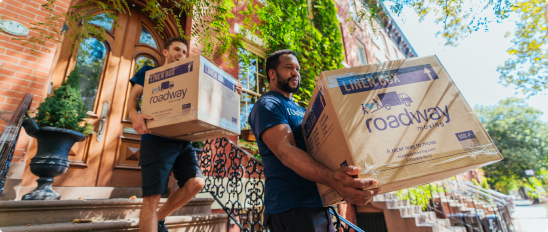5 Tips for a Smooth Winter Move







Planning a move during colder months can be tougher than the peak season for moving. From snow falling on the ground to cold temperatures all day and night, moving in winter comes with different challenges. However, it doesn’t mean that you shouldn’t move. If you’re looking to have a smooth winter move, here are five tips to consider from the get-go.
- Safeguard your belongings from the weather.Whether it’s local or international moves, it’s imperative to take care when boxing up your items to protect them from cold. If you’re moving during winter, you should double wrap all your breakable items such as dishware and glass to prevent them from breaking when the temperature changes too quickly. By doing it, you can make the transition of moving all your items from the warmth of your former house to the cold of the moving truck. Moreover, another way of protecting your possessions from extreme weather conditions is to pack and load them in your car instead of in the container. Also, you have to wait until you’re going to leave before moving all items to keep them safe and secure as much as possible.
- Prepare your home for movers.Moving in winter can be messier than other seasons. That said, it’s essential to prepare your home to make sure your movers can handle the move smoothly. For instance, they will encounter snow, dirt, and slush as they take items out and in. Hence, it would help if you lay down cardboard boxes and plastic drop sheets to make it easier for them to carry things without worrying about damage or floor stains. It’s also best to protect your home’s floor with hardwood so extra moisture will not cause lasting damage. When you’re moving out of your old house, find time to turn off the thermostat until the move is finished. That way, you can save money on your bills. Lastly, make a final call to your utility service providers to ensure the lights and heat will be working once you arrive.
- Get extra supplies when moving.Winter, in most cases, isn’t the usual season of moving. However, it doesn’t mean you can’t move during these months. You just need to prepare extra supplies in case you have to deal with emergency cases. Make sure you have these items ready and accessible throughout your winter move:
- Pairs of gloves – When it’s snowing it’s paramount to get an extra pair of gloves so your movers’ hands will not get cold and clumsy.
- Sheets and towels – You might need to use additional sheets and towels to safeguard your furniture, artwork, and even electronic devices as you bring them in and out into the house.
- Jumper cables, window scrapers, and tow ropes – These items can be a great help when you suddenly experience a drop in temperature during travel.
- Give extra travel timeTraveling in snow or cold weather takes extra time than traversing a clear road. That’s why it’s a great idea to give yourself extra time to get to your destination. For instance, it would help if you plan your route ahead of time and prepare for any unexpected changes along the way. If the movers will meet you at your new home, make sure you keep in touch with them so you’ll know if there are changes. While the schedule for snow plows are sometimes unpredictable, chances are you might find the route unavailable. Hence, it’s recommended that you equip your smartphones with mapping apps that can provide you with an alternative route when the need arises.
- Be prepared with a contingency plan.While it doesn’t happen all the time, sometimes the current weather can change all your moving plans in an instant. There are times that poor weather can really make your move almost impossible. When this happens, try to have a contingency plan so you can still have a successful move to look forward. This might mean you allow two more days where you can potentially move in case relocation is impossible on your scheduled date.
The Bottom Line
Surviving a winter move isn’t easy. However, with adequate care and preparation from an experienced moving company, you can undoubtedly have a less stressful moving experience. So, keep these tips in mind, take a deep breath and make a smooth transition to your new home in winter.









